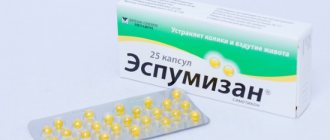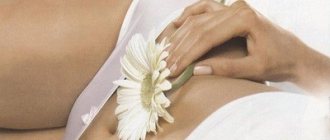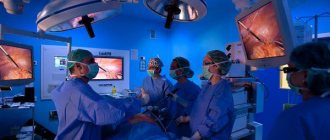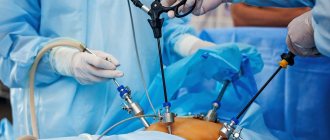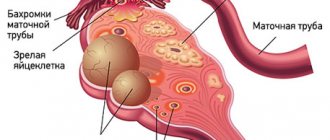Swimming is one of the best forms of exercise for children because, by providing a good workout for the muscles, water significantly reduces the stress on joints and ligaments and limits the overall stress in the body that occurs during physical activity. However, if surgical treatment is planned, the timing of return to swimming will depend on a combination of many factors.
When can a child or adult start going to the pool after surgery?
The safe timing of the start of active physical activity after surgery will be determined by the attending physician, depending on the nature and extent of the operation performed. In the case of operations affecting only the skin and subcutaneous tissue, the timing of restrictions on visiting the pool is associated only with the healing of the surgical suture. In operations on internal organs, blood vessels, bones and joints, the timing depends not only on the condition of external postoperative wounds, but also on the restoration of functions affected during surgical interventions.
At the same time, swimming itself is an excellent form of physical activity for the prevention of postoperative muscle atrophy, which can be observed in children with limited mobility after surgery for a long time.
MAIN RISKS WHEN SWIMMING AND BATHING IN THE POSTOPERATIVE PERIOD
Clinicians' concerns about bathing or swimming a patient after surgery primarily relate to the potential for wound infection. The risk of infection depends on the stage of wound healing, concomitant diseases, the type of reservoir and the quality of the water in it. The maximum risk of infection is observed when swimming up to 10 days after surgery in open freshwater bodies and in public pools.
The second risk factor when swimming in the postoperative period is the possibility of sutures coming apart from stress or sudden movements. The time frame for the formation of a durable postoperative scar varies depending on the tissue from 7-10 days (skin) to 21-28 days (soft tissue). In the case of operations on cartilage, ligaments, tendons, and maxillofacial operations, the healing time increases to 40-50 days. The period of abstinence from swimming also depends on the type of suture material used. When using non-absorbable suture material, it is safe to begin exercise in water only 10 days after removal of the sutures. This time is necessary for complete healing of micro-wounds from sutures.
When using self-absorbing sutures made of catgut or analogues of synthetic materials, their strength may be reduced by exposure to water and chemicals dissolved in it. For catgut, the critical period for maintaining strength is 7-10 days, for threads made from polyglycaprone - 18-21 days, from polydiaxanone - 40-50 days. When using self-absorbing sutures for operations on ligaments, cartilage and fascia, immersion in water can begin only after the tissues have completely restored their original strength - this is observed up to three months after the operation.
Another important factor is limitation of functions and pain. Return to swimming is possible only after significant restoration of temporarily lost functions and reduction of pain. Before this, aquatherapy classes are possible as prescribed by a doctor, which will help you recover faster after surgery and reduce the severity of pain.
Recovery after laparoscopy
One of the advantages of laparoscopy and the advantage over abdominal surgery is the short postoperative period and rapid recovery. Sometimes the patient can go home almost immediately after laparoscopic surgery. But they talk about the postoperative period even in this case, since laparoscopy is a serious surgical intervention with general anesthesia and a recovery period.
Postoperative period - the patient’s condition after laparoscopy
The patient's condition in the postoperative period is usually satisfactory. Many negative consequences and complications can be avoided due to rapid recovery. As a rule, the patient is discharged on days 3-5, but this does not mean that he can immediately return to his previous rhythm of life. Moreover, in the postoperative period after laparoscopy there is still room for some complaints. Let's look at some of them.
Flatulence after laparoscopy
Abdominal bloating is common in the postoperative period. This is due to a certain laparoscopy technique - the introduction of gas into the abdominal cavity. As a rule, the doctor prescribes medications to combat flatulence. It is important to quickly establish intestinal function and not to forget about physical activity in the first days after surgery.
Nausea, lethargy in the postoperative period
After laparoscopy, the patient may complain of weakness, nausea, loss of appetite, sore throat when swallowing (consequence of insertion of an anesthesia tube). This is a completely normal reaction after surgery. Dyspepsia usually goes away without treatment after a couple of days.
Pain in the area of postoperative incisions.
Despite the fact that the incisions in the peritoneal area are miniature, they can be disturbing. The pain may worsen with any movement. This should not worry the patient as the healing process is ongoing. If the pain causes severe anxiety, you should tell your doctor. Most likely, he will prescribe pain medication.
Nagging pain in the abdominal area.
During laparoscopy on the pelvic organs, damage to nearby surfaces sometimes occurs. Drawing pain indicates the healing process and goes away after a few days. But if the pain in the abdominal area becomes unbearable, you should consult a doctor urgently to rule out a complication. If the pain is accompanied by fever, or heavy vaginal discharge appears, then you should also inform your doctor.
Nutrition during recovery after laparoscopy
Immediately after laparoscopy, and even better during the entire first postoperative day, it is better not to eat. You can drink (if there is no nausea) small sips of still water.
Nutrition for 2-3 days of the postoperative period
On the second and third days, doctors recommend introducing boiled or steamed dishes into the diet - lean meat, fish in the form of cutlets, meatballs. The diet may include kefir, low-fat cottage cheese, and buckwheat porridge. You need to eat 6-7 times a day in small portions.
What can you eat after laparoscopy?
By the end of the week, nutrition after laparoscopy will be without restrictions (if the postoperative period passes without complications). You should talk more fully about diet and nutrition during the recovery period with the operating doctor. The main principles of nutrition after laparoscopy are to eat often, not to overeat, portions should be small, exclude salty, spicy, fried and alcohol. It is important to monitor bowel regularity.
Recovery after laparoscopy - questions and answers.
The most popular questions asked by patients after laparoscopy.
1. When can you get up after laparoscopy?
As a rule, the patient can get up 3-4 hours after surgery. You need to get up carefully, preferably with outside help, listening to your body. The distances should be short on the first day - to the toilet and back. The next day, physical activity expands. The patient can independently reach not only the toilet, but also walk along the corridor. By the way, walking quickly normalizes intestinal function and reduces flatulence.
2. When can I exercise after laparoscopy?
Physical stress after laparoscopy should be avoided for two to three weeks. In the future, you can introduce sports, but do it gradually. No heavy lifting for 3 months.
3. Will scars be noticeable after laparoscopy?
Incisions made during laparoscopy heal quickly. On the second day, the surgeon examines the sutures, and after 1-2 weeks the sutures are removed (usually on the 7th day). How visible the scars will be depends on the patient’s body, individual skin properties and immunity. Usually after a few months they fade and no traces of the incisions remain. But sometimes purple scars remain at the site of the incisions, although this happens extremely rarely.
4. When is sex possible after laparoscopy?
If laparoscopy was performed due to a gynecological disease, the doctor will answer this question. In any other case, sex is possible 14-20 days after surgery.
5. When can you plan a pregnancy after laparoscopy?
If the operation was not related to gynecological surgery, then there are no restrictions on conception. But many doctors advise that a month or two pass (the body must fully recover from anesthesia). After successful gynecological laparoscopy, pregnancy can be planned within a few months after consultation with the attending gynecologist. So, for example, if there was a laparoscopy to remove uterine fibroids, then pregnancy can be planned in six months, and if adhesions formed due to inflammation of the appendages were removed, then pregnancy is possible 1-2 months after the operation.
6. When can you wash after laparoscopy?
The shower can be used immediately after discharge. Doctors do not recommend taking a bath during the first month. The swimming pool, bathhouse, sauna, hammam cannot be visited for 30-60 days (depending on the speed of healing of the incisions)
Recommendations – what not to do after laparoscopy.
It is forbidden!
- eat food in the first 24 hours after surgery,
- lift weights and reach with your arms up (hanging laundry) for 90 days,
- drink alcohol during the first 30 days (risk of bleeding),
If you are responsible and follow all the recommendations and advice, the postoperative period will pass without complications, and the recovery process after laparoscopy will be easy and quick.
WHEN CAN YOU START SWIMMING AFTER SURGERY?
- You can return to swimming when the attending physician, surgeon, family doctor, or physical therapist have confirmed that swimming is safe for the operated child.
- You can start swimming only when the postoperative wound has completely healed and is no longer painful.
- A safe start to swimming is possible 10 days after the sutures have been removed or the sutures have dissolved (in the case of using self-absorbable threads).
- If your child is wearing a cast or external fixation device, swimming should not occur until the surgeon says it is safe to do so.
Technique of combined laparoscopic and open hernioplasty.
The method of combined hernioplasty (isolation, stitching and intersection of the hernial sac is carried out through an incision in the skin in the projection of the external inguinal ring, and hilar repair is performed using laparoscopic access). We use this method for large hernial sacs and inguinal-scrotal hernias, when laparoscopic isolation of the hernial sac is difficult, technically impossible or unreasonably traumatic.
At the paraumbilical point, a Veress needle is inserted into the abdominal cavity and pneumoperitoneum is applied. Next, in the projection of the hernial sac, a 2 cm long incision is made in the skin and subcutaneous tissue. The hernial sac is located and isolated from the surrounding tissues, opened, and the contents are inserted into the abdominal cavity. The bag is stitched at the neck, tied and cut off. The skin wound is sutured in layers. Then additional ports are introduced. It is worth noting that during laparoscopy the funnel of the peritoneum of the sutured hernial sac is determined. The peritoneal incision should begin above this funnel, the layers of the peritoneum are peeled off from the preperitoneal tissue, and then hernioplasty is performed with a polypropylene implant, as described above.
The use of this technique can significantly reduce the time of surgical intervention and reduce the number of complications in the scrotal area associated with trauma to the hernial sac during its release.
LIMITATIONS AFTER SPECIFIC TYPES OF OPERATIONAL INTERVENTIONS
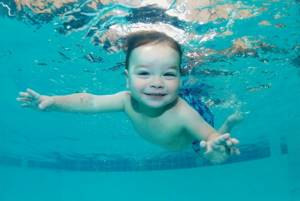
Different surgeries will require a longer or shorter recovery time. For example, after surgery on the knee joint, at least 3 months must pass before the risk from swimming decreases to an acceptable level.
Likewise, swimming after cosmetic surgery can stretch fresh scars and impair the aesthetic results of the treatment.
Restrictions after abdominal operations are also associated with the fact that immersion of the body in water and physical activity lead to an increase in blood pressure, which can provoke internal bleeding. Usually, after abdominal surgery, you need to wait at least 6-8 weeks before starting swimming lessons.
After an appendectomy, it is recommended to wait about 2 weeks before swimming.
After ophthalmological operations, a pause of at least 4 weeks is required. Also, when swimming in this case, you will need to wear protective glasses.
After hip surgery, it is recommended to wait 8 to 12 weeks before swimming.
When performing cardiac bypass surgery, you must wait at least 9 months before starting physical activity.
CARE OF SURGICAL SUTURE WHEN BATHING
In all cases, the postoperative suture area must be kept clean. To do this, you must avoid swimming in open fresh water, or use a sealed, waterproof sticker bandage. After swimming, the incision area should be washed with clean water and soap to prevent secondary infection.
Wet swimwear must be removed immediately after swimming. The seam must be thoroughly dried with a clean towel or disposable absorbent wipes.
If swimming in open water or a pool without a waterproof bandage, apply sunscreen to the seam area.
When resuming swimming lessons, overload should be avoided: training should begin gradually, giving the child time to rest.
